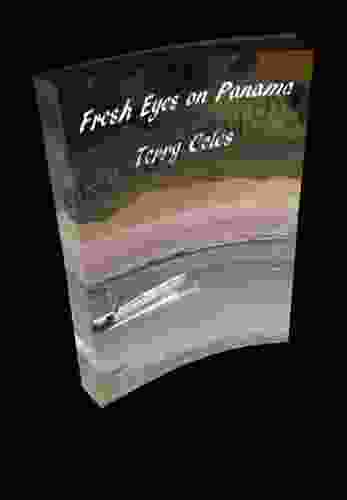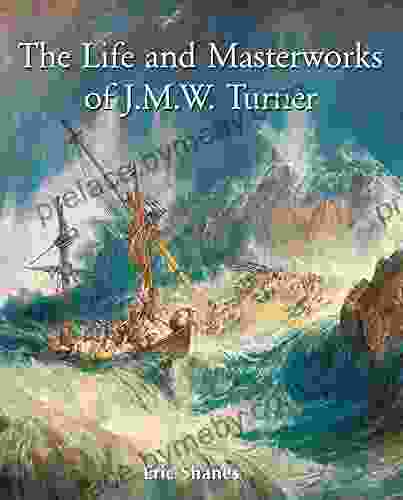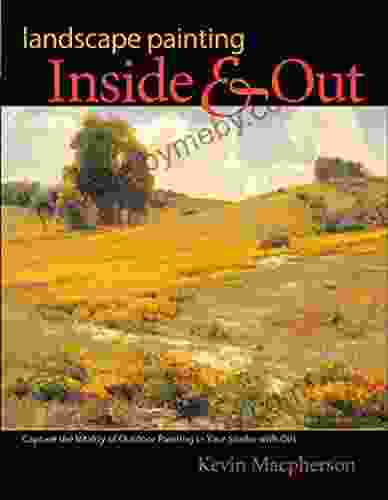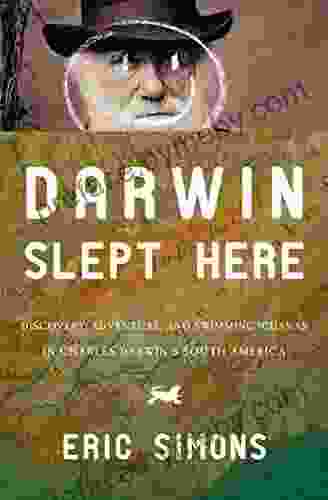Capture the Vitality of Outdoor Painting in Your Studio with Oils

If you love the beauty of outdoor painting but find it challenging to capture the fleeting light and colors of nature, this comprehensive guide is for you. In this article, we'll explore the techniques and materials you need to successfully bring the vibrancy of the outdoors into your studio.
Choosing the Right Materials
The key to successful studio painting is choosing the right materials. Here's what you'll need:
4.7 out of 5
| Language | : | English |
| File size | : | 37505 KB |
| Text-to-Speech | : | Enabled |
| Screen Reader | : | Supported |
| Enhanced typesetting | : | Enabled |
| Print length | : | 146 pages |
- Oils: Oil paints are a great choice for outdoor painting because they allow for a wide range of colors and textures. They're also relatively slow-drying, which gives you more time to blend and work the paint.
- Canvas or panels: Canvas is a traditional choice for oil painting, but you can also use panels. Panels are easier to transport and less likely to warp than canvas.
- Brushes: You'll need a variety of brushes for different techniques. Soft brushes are good for blending, while stiffer brushes are good for detail work.
- Palette: A palette is used to hold your paints and mix colors. You can use a wooden or plastic palette, or even a piece of glass.
- Mediums: Mediums are used to thin or thicken oil paints. They can also be used to change the drying time of the paint.
Setting Up Your Studio
Once you have your materials, it's time to set up your studio. Here are some tips:
- Choose a well-lit area: Natural light is best for painting, so set up your studio in a room with plenty of windows.
- Ventilate your studio: Oil paints can release fumes, so it's important to ventilate your studio well.
- Organize your supplies: Keep your supplies organized so you can easily find what you need.
Capturing the Vitality of Nature
Now that you have your materials and studio set up, it's time to start painting. Here are some tips for capturing the vitality of nature in your studio:
- Start with a sketch: Before you start painting, it's helpful to make a sketch of your subject. This will help you to plan your composition and get the proportions right.
- Use a limited palette: A limited palette will help you to create a more harmonious painting. Choose a few colors that you like and stick to them.
- Work from dark to light: When painting a landscape, it's helpful to work from dark to light. This will help you to create a sense of depth and atmosphere.
- Pay attention to the light: The light is one of the most important elements in a painting. Pay attention to the direction of the light and the way it affects the colors of your subject.
Practice Makes Perfect
The best way to improve your outdoor painting skills is to practice. Try to paint en plein air (outdoors) as often as possible. But even if you can't get outside, you can still practice in your studio. Here are some ideas:
- Paint from a photo: If you can't get outside, you can still paint from a photo. This is a great way to practice capturing the light and colors of nature.
- Set up a still life: A still life is a great way to practice painting different objects and textures. You can also use a still life to experiment with different lighting conditions.
- Take a class: If you want to improve your skills quickly, consider taking a class from an experienced artist.
Capturing the vitality of outdoor painting in your studio is a rewarding challenge. With the right materials, techniques, and practice, you can create beautiful paintings that will bring the beauty of nature indoors.
4.7 out of 5
| Language | : | English |
| File size | : | 37505 KB |
| Text-to-Speech | : | Enabled |
| Screen Reader | : | Supported |
| Enhanced typesetting | : | Enabled |
| Print length | : | 146 pages |
Do you want to contribute by writing guest posts on this blog?
Please contact us and send us a resume of previous articles that you have written.
 Book
Book Novel
Novel Page
Page Chapter
Chapter Text
Text Story
Story Genre
Genre Reader
Reader Library
Library Paperback
Paperback E-book
E-book Magazine
Magazine Newspaper
Newspaper Paragraph
Paragraph Sentence
Sentence Bookmark
Bookmark Shelf
Shelf Glossary
Glossary Bibliography
Bibliography Foreword
Foreword Preface
Preface Synopsis
Synopsis Annotation
Annotation Footnote
Footnote Manuscript
Manuscript Scroll
Scroll Codex
Codex Tome
Tome Bestseller
Bestseller Classics
Classics Library card
Library card Narrative
Narrative Biography
Biography Autobiography
Autobiography Memoir
Memoir Reference
Reference Encyclopedia
Encyclopedia Elsie Martinez
Elsie Martinez Eric Goldberg
Eric Goldberg Eric Burns
Eric Burns John M Barry
John M Barry Matt Pavia
Matt Pavia Elizabeth Dupart
Elizabeth Dupart Elizabeth S Trafalgar
Elizabeth S Trafalgar Phil Stutz
Phil Stutz Ian Littlewood
Ian Littlewood Elizabeth Faidley
Elizabeth Faidley J Michael Mcfadden
J Michael Mcfadden Sharon Kramis
Sharon Kramis Wendy Rae
Wendy Rae Lee Hartley Carter
Lee Hartley Carter Emily Wilson
Emily Wilson Kathleen Masters
Kathleen Masters Eileen Figure Sandlin
Eileen Figure Sandlin Zita West
Zita West Elizabeth L Eisenstein
Elizabeth L Eisenstein Enthralling History
Enthralling History
Light bulbAdvertise smarter! Our strategic ad space ensures maximum exposure. Reserve your spot today!

 Ken SimmonsUnlocking the Hidden Potential: Decoding Customer Value at the Bottom of the...
Ken SimmonsUnlocking the Hidden Potential: Decoding Customer Value at the Bottom of the...
 Glenn HayesBuilding Extensible and Maintainable Object-Oriented Software: The Ultimate...
Glenn HayesBuilding Extensible and Maintainable Object-Oriented Software: The Ultimate... Brian WestFollow ·18.3k
Brian WestFollow ·18.3k Ruben CoxFollow ·17.5k
Ruben CoxFollow ·17.5k Jerry HayesFollow ·13k
Jerry HayesFollow ·13k Braden WardFollow ·8k
Braden WardFollow ·8k Dashawn HayesFollow ·8.7k
Dashawn HayesFollow ·8.7k Hamilton BellFollow ·10k
Hamilton BellFollow ·10k Jeremy CookFollow ·7.6k
Jeremy CookFollow ·7.6k Francisco CoxFollow ·4.4k
Francisco CoxFollow ·4.4k

 Richard Adams
Richard AdamsGame Development with Rust and WebAssembly: A...
Are you passionate...

 David Baldacci
David BaldacciGendered Identity and Aspiration on the Globalized Shop...
: The Convergence of Gender, Identity, and...

 Natsume Sōseki
Natsume SōsekiFresh Eyes On Panama: A Captivating Exploration of a...
Panama, a country often overshadowed by its...

 Adrian Ward
Adrian WardThe Life and Masterworks of J.M.W. Turner: A Timeless...
The Man Behind the Masterpieces ...
4.7 out of 5
| Language | : | English |
| File size | : | 37505 KB |
| Text-to-Speech | : | Enabled |
| Screen Reader | : | Supported |
| Enhanced typesetting | : | Enabled |
| Print length | : | 146 pages |












